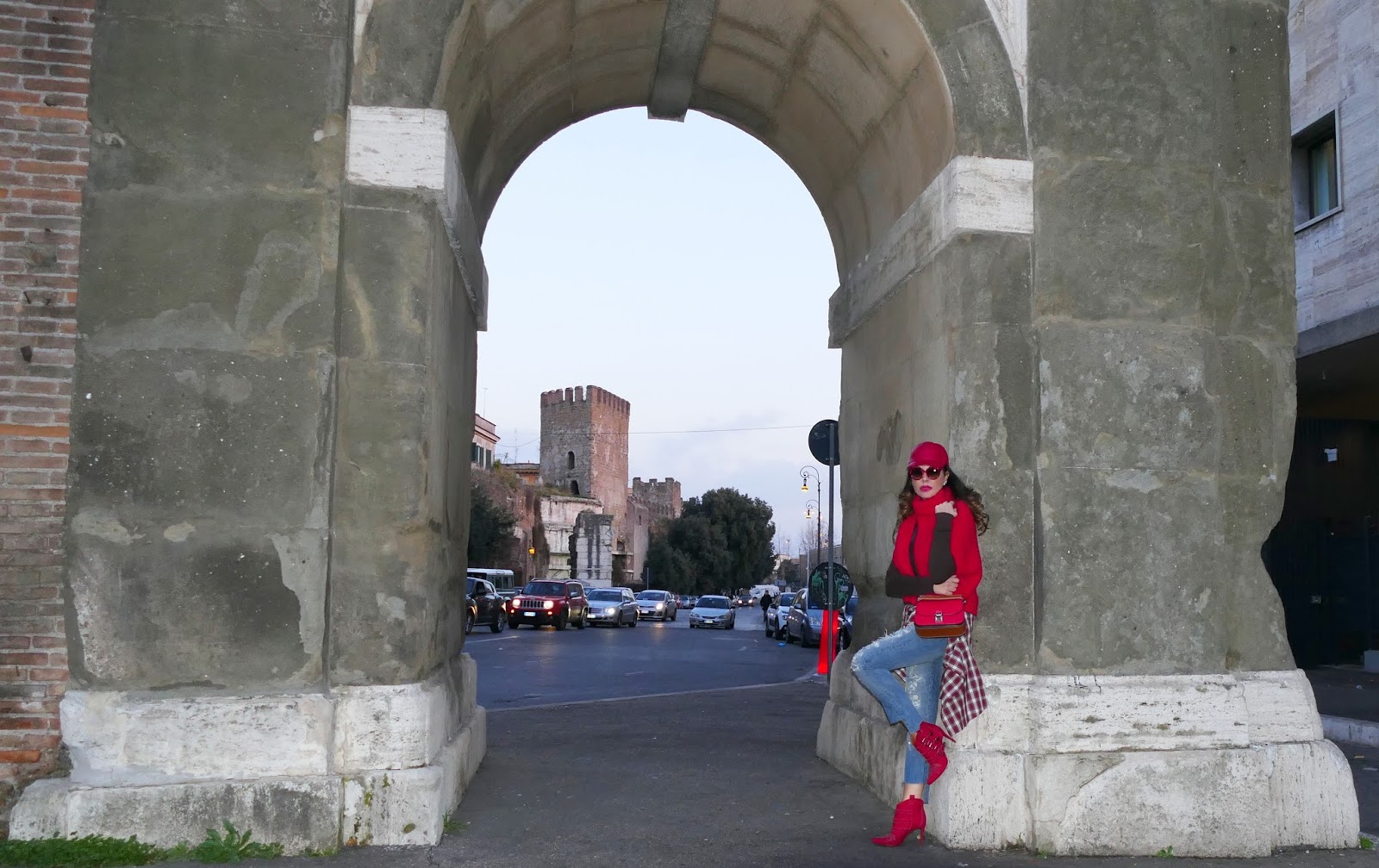
La costruzione degli acquedotti fu una delle imprese più grandi e impegnative della civiltà romana, forse la più alta manifestazione della grandezza di Roma.
Dal 312 a.C. in poi affluì a Roma una quantità enorme di acqua potabile, come nessun altra città del mondo antico ebbe mai e che valse alla città il titolo di “regim aquarum”.
Gli acquedotti romani furono costruzioni molto sofisticate, il cui livello qualitativo e tecnologico non ebbe uguali per oltre 1000 anni dopo la caduta dell’Impero Romano.
Lontano dalla città, generalmente, l’acqua scorreva in canali sotterranei, chiamati specus.
Se l’acqua, a causa della morfologia del territorio, doveva scorrere in superficie si costruivano dei muri sui quali essa viaggiava per regolarne la pendenza.
A volte i muri non bastavano e i Romani utilizzarono un elemento architettonico: l’arco.
Le arcate servivano a regolamentare la pendenza e a superare ostacoli del terreno.
La maggior parte degli acquedotti “entrava” a Roma con le arcate. Nel punto dove i viadotti incrociavano strade importanti venivano spesso innalzati degli archi con decorazioni speciali che celebravano il committente della costruzione dell’acquedotto.
Quello che vedete è l’acquedotto costruito nel 1587 sotto papa Sisto V, che sfruttò le strutture antico-romane ancora in parte esistenti, letteralmente riciclate per la costruzione del suo progetto, “l’Acqua Felice”. Dal punto dove l’Acqua Felice si stacca dalla cinta muraria, di questo acquedotto restano oggi solo i primi cento metri all’incirca.
Per fortuna il segmento superstite comprende lo “speciale” arco a doppia facciata che Sisto V fece innalzare sul luogo dove l’Acqua Felice incrociava la via Tiburtina, la principale arteria che giungeva a Roma da est.
“Chi vorrà considerare con attenzione la quantità delle acque di uso pubblico per le terme, le piscine, le fontane, le case, i giardini suburbani, le ville; la distanza da cui l’acqua viene, i condotti che sono stati costruiti, i monti che sono stati perforati, le valli che sono state superate, dovrà riconoscere che nulla in tutto il mondo è mai esistito di più meraviglioso “.
Plinio il Vecchio (23-79 d.C.)
Indosso un outfit casual-chic, con il tocco grunge anni ’90 di una camicia a quadri annodata in vita, per una passeggiata a Roma “Caput Mundi”, il centro assoluto del mondo antico, la città in cui ogni angolo brilla di luce propria!
(Clicca qui e qui per saperne di più su come annodare in modo super trendy una camicia intorno alla vita).
(Clicca qui per vedere tutti i miei precedenti post da Roma).
(Clicca qui e qui per saperne di più su come annodare in modo super trendy una camicia intorno alla vita).
(Clicca qui per vedere tutti i miei precedenti post da Roma).
Aqueducts have been around for a long time and they will continue to
exist for a much longer time. Aqueducts were first invented by the
Romans in 312 BCE. The romans invented the aqueduct system because they
were originally grabbing water from the Tiber River and local
springs/wells. Though as the city began to grow these water sources were
becoming polluted. This is the moment that the Romans began to find the
need to grab water from another source. The city was ever increasing
and they had no local clean water. In this dilemma the Romans found that
the near by mountains had many large clean springs of water. They
thought that they could build a structure that would be able to carry
this water from the mountains into the city allowing for clean water for
all the citizens.
exist for a much longer time. Aqueducts were first invented by the
Romans in 312 BCE. The romans invented the aqueduct system because they
were originally grabbing water from the Tiber River and local
springs/wells. Though as the city began to grow these water sources were
becoming polluted. This is the moment that the Romans began to find the
need to grab water from another source. The city was ever increasing
and they had no local clean water. In this dilemma the Romans found that
the near by mountains had many large clean springs of water. They
thought that they could build a structure that would be able to carry
this water from the mountains into the city allowing for clean water for
all the citizens.
The Roman aqueducts stand today, more than two thousand years later, as a
testament to the engineering genius of the ancient Romans.
These massive structures not only boggle the human mind as to how they
were constructed but their function and reliability are still a modern
marvel.
In fact, some aqueducts remain operational to this day. Walking
through the modern city of Rome one will come across these monumental
arched structures that often cross streets and avenues.
Sometimes these arches are doubled and often ornately decorated.
testament to the engineering genius of the ancient Romans.
These massive structures not only boggle the human mind as to how they
were constructed but their function and reliability are still a modern
marvel.
In fact, some aqueducts remain operational to this day. Walking
through the modern city of Rome one will come across these monumental
arched structures that often cross streets and avenues.
Sometimes these arches are doubled and often ornately decorated.
What
you see here is the aqueduct built in 1587 under Pope Sixtus V, which
advantage of the ancient Roman structures still existing in part,
literally recycled for the construction of its project, the “Acqua Felice”. Of this aqueduct are today only few meters. Fortunately,
the surviving stretch includes the “special” double-sided arc that
Sixtus V had built on the spot where the Acqua Felice crossed the Via
Tiburtina, the main artery that reached Rome from the east.
you see here is the aqueduct built in 1587 under Pope Sixtus V, which
advantage of the ancient Roman structures still existing in part,
literally recycled for the construction of its project, the “Acqua Felice”. Of this aqueduct are today only few meters. Fortunately,
the surviving stretch includes the “special” double-sided arc that
Sixtus V had built on the spot where the Acqua Felice crossed the Via
Tiburtina, the main artery that reached Rome from the east.
I’m wearing a casual–chic outfit, with a ’90s grunge touch of a shirt knotted at the waist, for a walk in Rome “Caput Mundi“, the absolute center of the ancient world, the city that shines in every corner!
(Click here to read more about the shirts-tied-around-the-waist trend).
(Click here to see all my previous posts from Rome).
Location: Acqua Felice Aqueduct – Rome – Italy
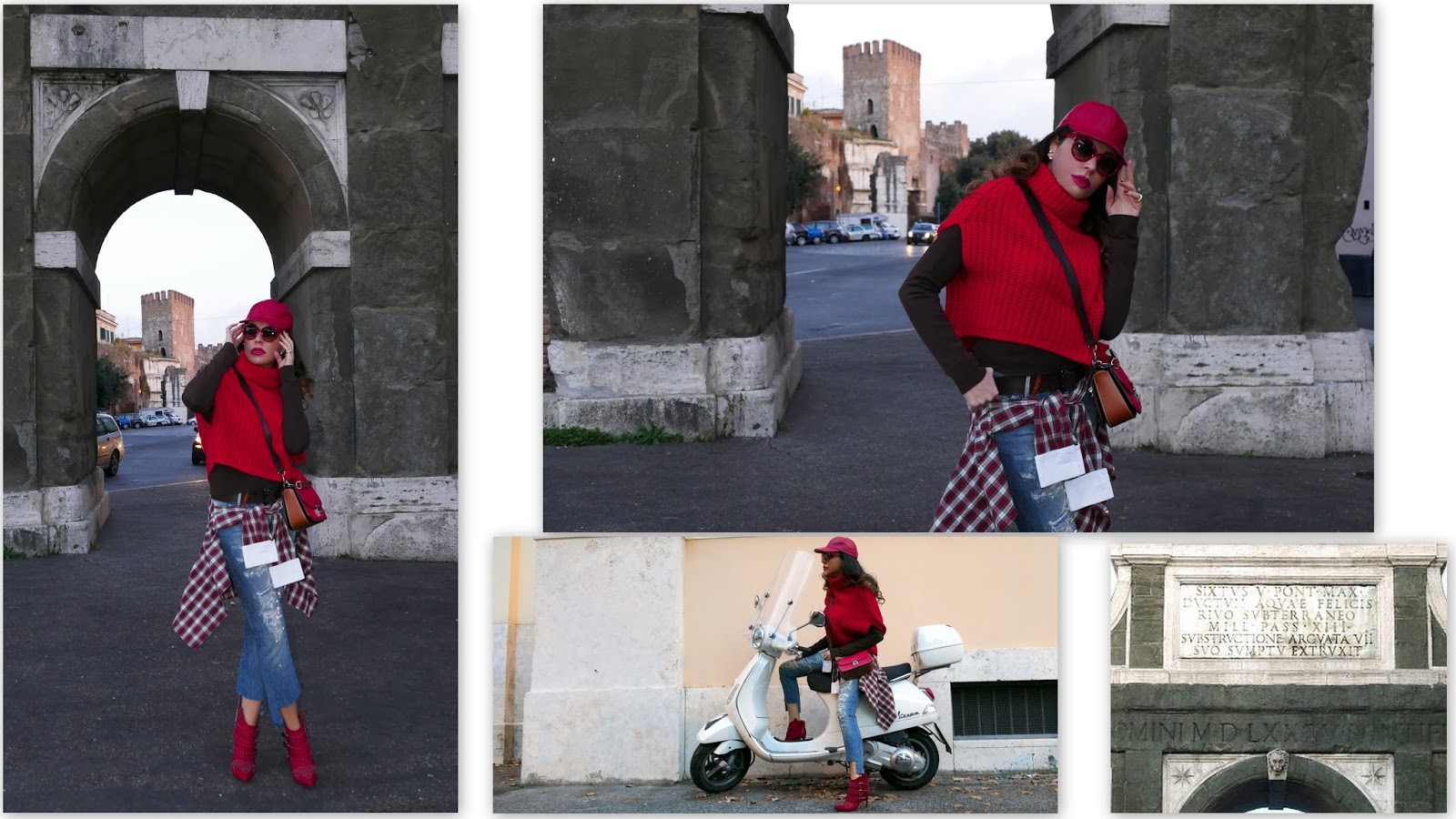

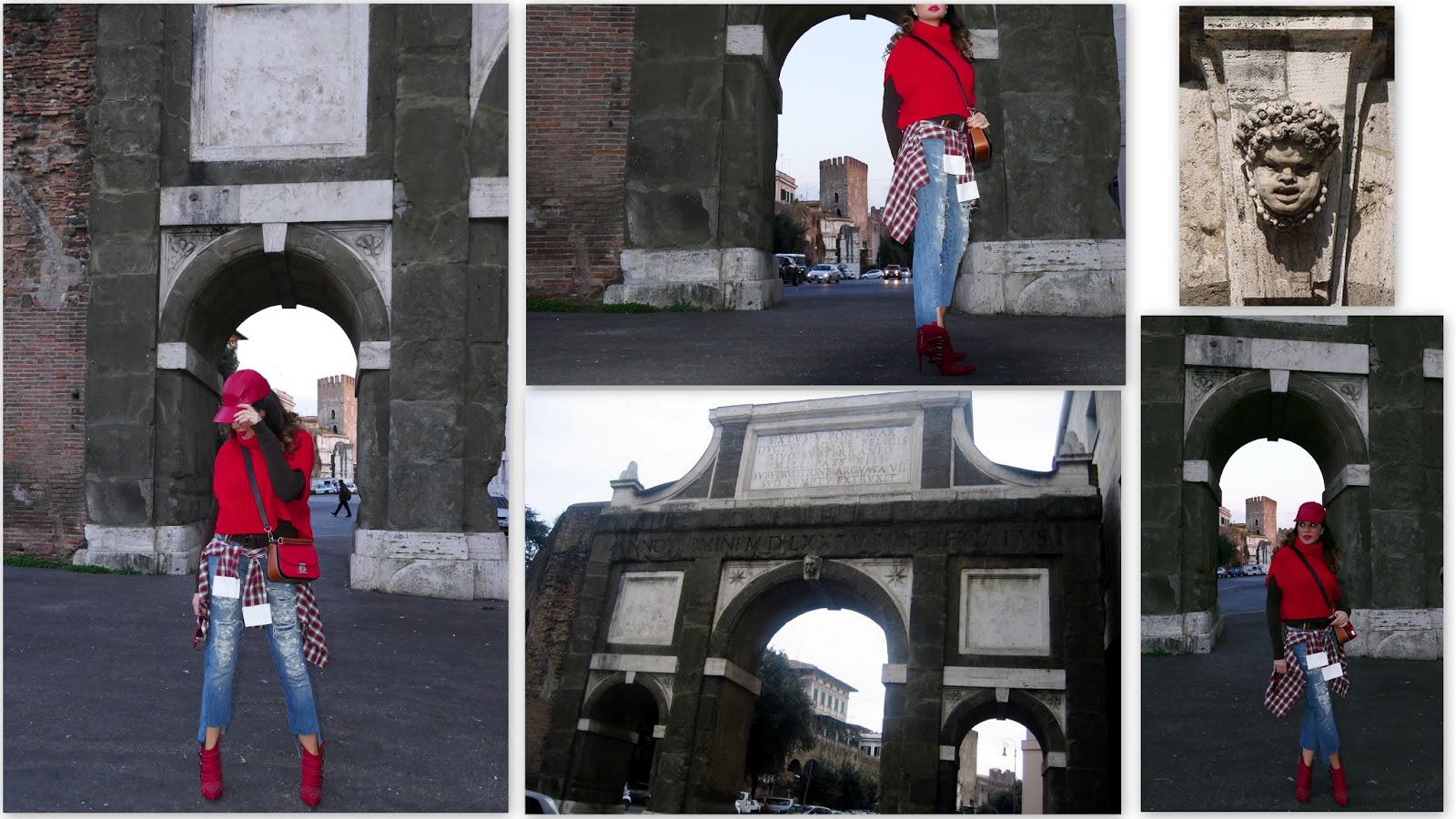



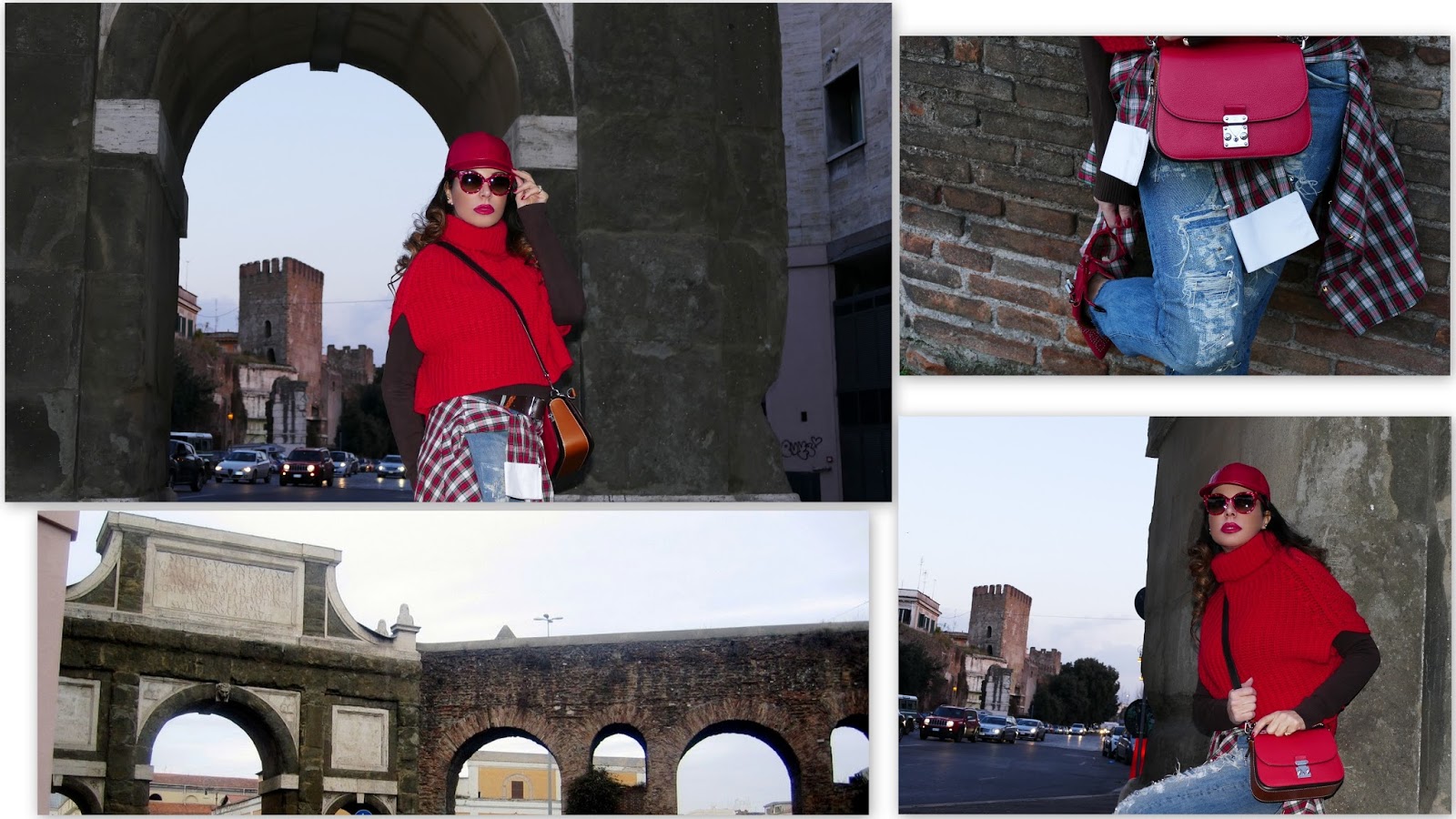


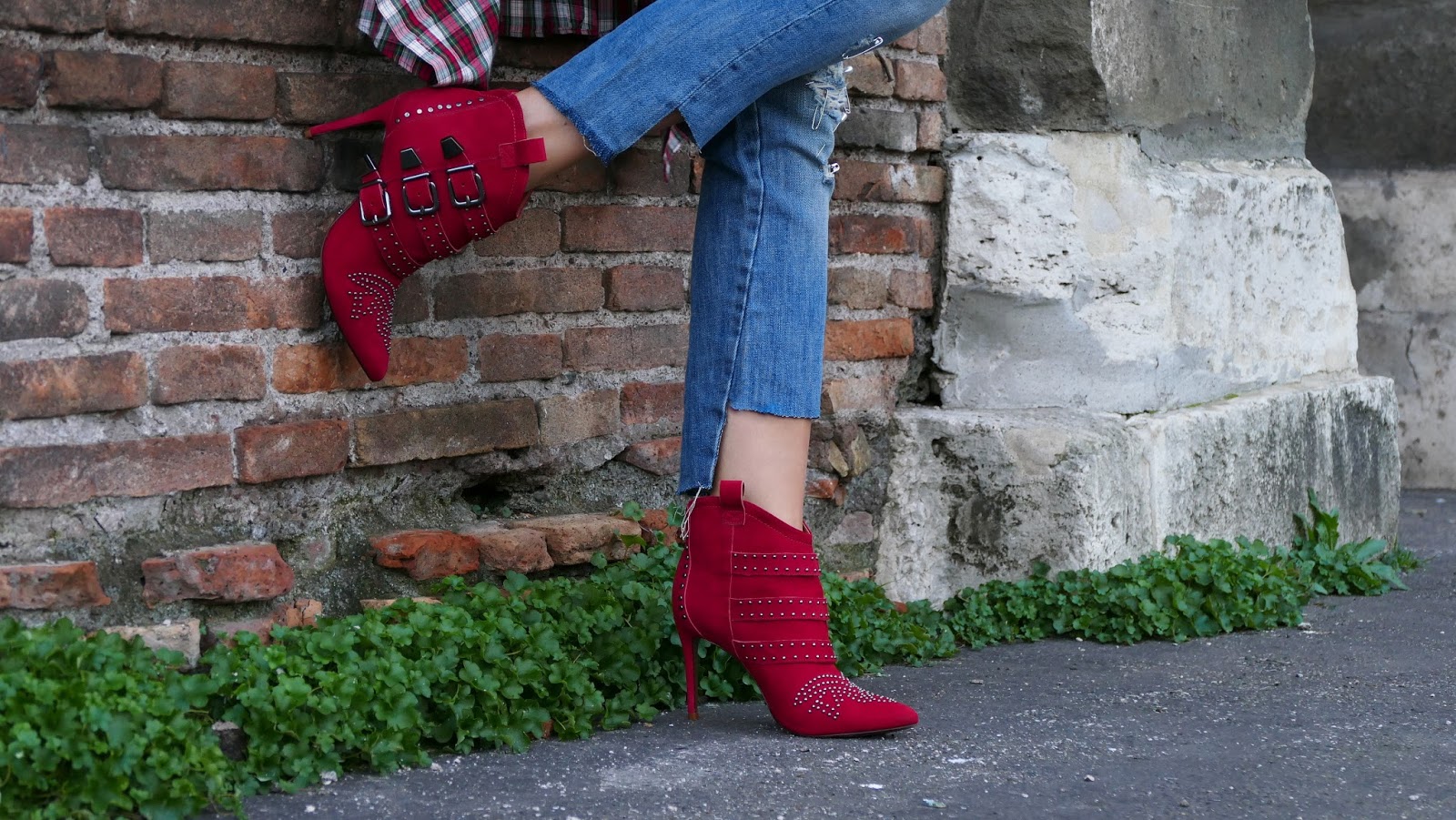

Photos: GerardoFusco.it
I was wearing:
Mia wish sweater
Massimo Dutti plaid shirt
Met jeans
Essedue sunglasses



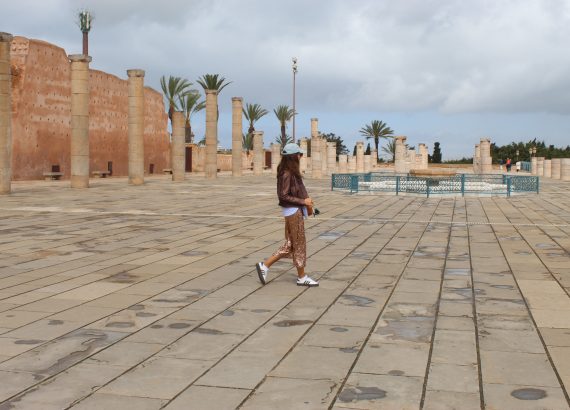
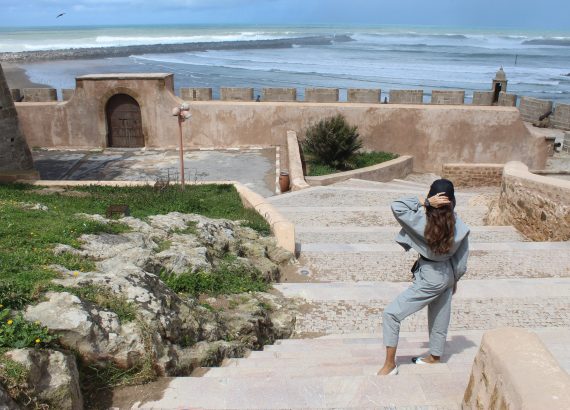
Sai che mi piace molto il look che indossi? Il rosso ti sta benissimo. Le scarpe sono stupende.
Lovely pictures!
THE PINK ELEPHANT SHOE // INSTAGRAM //
Yes, aqueducts were really important! Thanks for sharing the history, dear Paola! And you get definitely the best mark for your perfect and so cool look!
xx from Bavaria/Germany, Rena
http://www.dressedwithsoul.com
Beautiful pictures dear! And I love your look & omg those boots! Amazing!
My lovely dear you always look wonderful<3
Beautiful outfit<3
http://www.justcleo.pl
I love your boot. Amazing!
http://www.topmosttree.com
Articolo molto interessante!
L'outfit è meraviglioso…degno di lode solo per la tonalità di rosso che hai scelto, ti dona!
Proprio oggi ho scritto un articolo sul mio 'look di emergenza…ti lascio il link http://www.laviniainthewonderland.it/look-emergenza-by-lavinia-the-wonderland/
Baci,
Lavinia In The Wonderland
molto belle queste foto, il rosso ti dona mia cara!
baci Gina
new post
F-Lover Fashion Blog by Gina Beltrami
beautiful pictures!
I love history and is so wonderful watch these photos. You loob fabulous in this outfit, I love your shoes 🙂
Nice! We have an amazing Roman aqueduct in Segovia, a few kilometers away from Madrid, and I am overwhelmed every time I visit the place!
have a good week!
S
Io di acquedotti romani ne so qualcosa, vado quasi tutti i giorni a correre al Parco degli Acquedotti, che si chiama così perchè è attraversato da 4 acquedotti romani!^^ Ci sei stata sull'Appia Antica? Io abito proprio da quelle parti! 🙂
Comunque sei sempre favolosa Paoletta, soprattutto quando indossi il rosso, adoro i tuoi stivaletti!:D
Baci!
S
https://s-fashion-avenue.blogspot.it/
Such amazing architecture! Rocking the red Paola!
Those boots! Love the red. Perfect for undecided weather!
Christina ♥ https://caliope-couture.com
Absolutely gorgeous, love this red :)) Beautiful day to you xx
looking gorg as always Paola. the boots are lovely
http://www.mssparkleandglow.com
è una particolarità di Roma c'è anche un parco chiamato il Parco degli acquedotti dove appunto si possono vedere benissimo.
Bellissimo il tuo outfit, mi piacciono molto gli stivaletti
un bacione
admaiorasemper.website
how cool is the outfit, love the boots!
keep in touch
http://www.beingbeautifulandpretty.com
http://www.indianbeautydiary.com
Love this red look! Well done babe!
Xx,
|| FLOORTJELOVES ||
http://www.floortjeloves.com
http://www.bloglovin.com/blogs/floortjeloves-12198253
Che colori Paola! Adoro gli stivaletti, sei bellissima!:*
love the whole outfit ! so nice !
My newest post
Check out my ♥Instagram ,Blog╚ovin and
Google✚
Stay Gold
Sei bellissima Paola, adoro gli stivaletti! Un bacio.
http://solaanteelespejo.blogspot.com.es/
Che belle queste foto!!! Adoro il rosso !
Bacioni
http://www.glitterchampagne.com
I love how casually cool this outfit is, especially with your studded red boots and plaid top tied around the waist. Super chic!
xoxo
Rina
http://www.andshedressed.com
Gimme these shoes – IMMEDIATELY! Sooo gorgeous, babe!! Love the whole outfit!
♘ http://www.sugarpopfashion.com ♘
Beautiful photos as always and your booties… awesome!
xx
http://www.mybeautrip.com
Sei splendida con questo look, bellissimo gli abbinamenti con il rosso!
Alessia
new post
Thechilicool
Fantastica! Vado a leggere anche il post su come annodare la camicia😘
Grazie Mary!
xoxo
Di resti romani con acquedotti ne ho anche io nelle vicinanze che fascino la storia raccontata da una bella donna come te… Gli stivaletti un amore
Baci
Wow, dear! Red it looks amazing on you! How to style brown boots
😉
Lindas fotos! E belo look! Adoro vermelho.
Ótima quarta!
Beijo! ^^
Stunning doll
Tutto stupendo e tu magica!
Adoro i tuoi testi, sono di enorme interesse! Splendida!
A gorgeous pop of red. Lovely!
I love the boots!!!
xx LL
http://www.lalouuula.com
Looking very gorgeous sweetie… and I love ur coat and boots! kisses, NEHA
http://www.theinstylejournal.com/
The boots are too gorgeous .
http://www.pink-purpledots.blogspot.com
Thanks a lot 😀
You look perfect. Red is the new black and fits awesome on you 😀
NEW TIPS POST | Facial Masks: Importance, Types and Application.
Instagram ∫ Facebook Oficial Page ∫ Miguel Gouveia / Blog Pieces Of Me 😀
Che meraviglia questi scatti
LA BORSA DI MARTINA
It's amazing how aqueducts work and how essential they were back then. They're so beautiful to look at too
Sxx
http://www.daringcoco.com
You look gorgeous in red dear!
Emma
http://www.emmalovesfashion.com
Perfect, stylish and so cute combo!
Kisses
————————-
http://fashionelja.pl
It might be that I studied about the Roman aqueducts at high school!
I think your post about it is more great than school text book!!
akiko
Great photos) as usual your look is perfect)
http://beyoutiful.com.ua
Love the red hot colour, Paola! xoxo
Thanks honey!
Me encanta tu look de hoy belleza!!!! feliz día! un besazo! te espero en blog
http://www.ShoesAndBasics.com
Tu riesci a rendere ogni cosa interessante e bella Paola. Hai un dono incredibile.
Un bacione
Maggie Dallospedale
Indiansavage.com
Amazing pictures Paola. Love your boots.
Simera |Beautetude
I love your boots! OMG. You pull this red-themed outfit so well!
Angelie // Bohol Butterfly Sanctuary